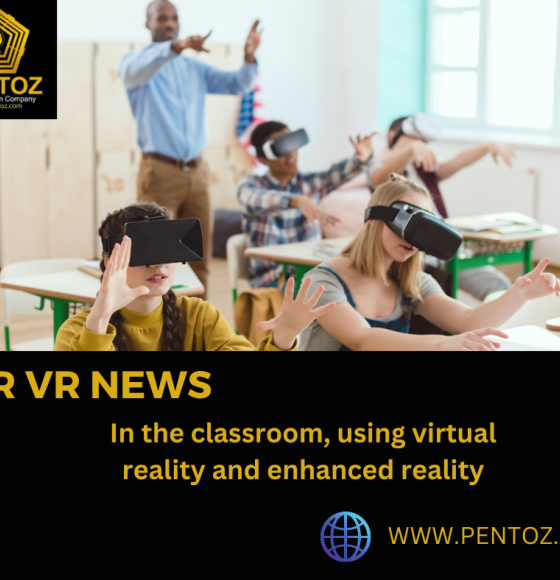As more educational institutions implement digital teaching strategies like interactive whiteboards, class blogs, and game-based learning, technology has evolved into a crucial component of learning in the modern world.
Since education is anticipated to be the fourth-largest industry for VR investment by 2025, we anticipate that most classrooms will soon implement virtual reality (VR) and augmented reality (AR) technology to imitate objects and settings, which will help children learn.
Virtual reality (VR) is a computer-generated environment that appears genuine when viewed through a helmet or headset. Information retention and practical application of knowledge are made easier by the immersive environment and virtually touchable items. AR uses real-world settings supplemented with computer-generated images via smartphone apps or AR Glasses, whereas VR is fully virtual. The latter is a new tool that will overlay images and data on top of what we can already see.
How to incorporate AR and VR into classroom lessons
Using VR and AR in the classroom can promote excitement and engagement, improve memory capacity and knowledge retention, and lessen distractions.
Students who struggle with learning disabilities like dyslexia, dyspraxia, dysgraphia, and attention deficit hyperactivity disorder (ADHD) can benefit from safe, regulated environments that VR and AR can help create.
Here are some ways that different school disciplines could include VR and AR into their lesson plans as almost 93% of teachers indicated that their pupils would be enthusiastic about it:
Maths
Students may construct and measure 3D shapes anywhere they choose, including the classroom, using augmented reality (AR) apps like Shapes 3D. This enables pupils to study each shape’s intricate measurements and characteristics using a digital gadget.
By adding physical activities like stretching, bending, squatting, crawling, and reaching to discover the answer, arithmetic Ninja AR can make arithmetic engaging for younger pupils.
Geography
Students can go to any location on Earth using VR headsets, including the Seven Wonders of the World, the Louvre Museum, the North Pole, Machu Picchu, the Moon, and Mars.
Students can research how various settings can alter how people interact with them, learn how different elements can affect a location’s geography, and look at how trade and economics vary around the world with the National Geographic Explore VR app.
Languages and literacy
In order to inspire their writing or make it simpler for them to comprehend a tale they are reading, VR can transfer pupils to fantastical realms or the setting of their books.
With the aid of a virtual assistant and AR-powered apps, like Mondly, students can learn a new language or improve their present language skills. These apps use augmented reality to customize learning regimens depending on each student’s requirements and strengths.
Exercise Education
No matter the weather, students may practice their tactics, build cooperation skills, and learn more about a sport and its participants by using VR headsets to bring the sports field into the classroom.
Science
Students’ understanding of human and animal anatomy can be drastically changed through VR apps.
Using Complete Anatomy 2023, students can virtually handle a human heart, examine cells, and travel the human body. With the use of VR Frog Dissection, they may also dissect a frog and inspect its body without hurting the reptile.
History
Students can use the technology as a time machine to watch important global events, visit historical locations, and immerse themselves in various eras, which is similar to the transporting abilities of VR in Geography lectures.
Students can examine and learn more about a variety of historical artifacts up close with the King Tut app, including an Egyptian pharaoh from the 18th dynasty named Tutankhamun.
Art
Through virtual reality (VR), students may tour renowned art museums like the Louvre in Paris and get up-close views of sculptures and paintings. It also enables pupils to discover different kinds of art, such street art.
Students can use art augmented reality (AR) apps to make their own art and learn about contemporary art styles including 360 photography and sketching. Students can use World Brush to paint by waving their device in
Future of Education Technology
By providing courses and experiences that would not be possible without these technologies, VR and AR are empowering students to extend their learning outside of the classroom.
Teachers are on pace to revolutionize how students learn and explore the world by fusing conventional teaching techniques with immersive technology.
Through immersive and captivating experiences, VR and AR help students learn the topic better and develop soft skills like teamwork, leadership, and time management.
Education facilities will eventually include VR and AR into their lesson plans as the technology advance quickly and become more widely available.

















